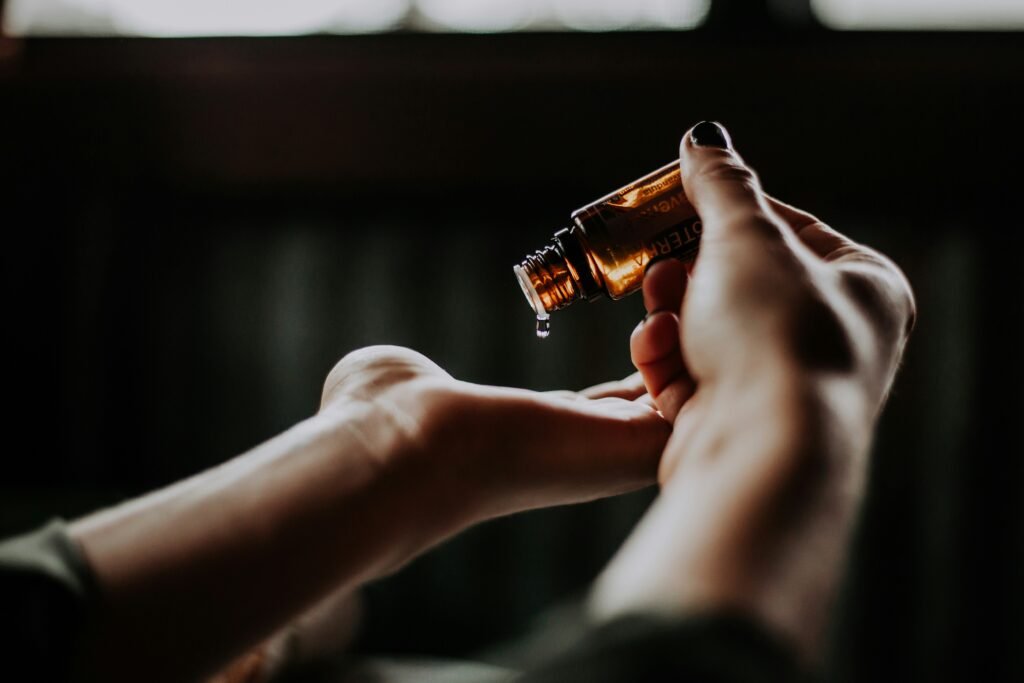If you own a leather wallet, you know how important it is to keep it in good condition. From preserving its rich hue to preventing any wear and tear, caring for your leather wallet is essential to prolong its lifespan. In this article, you will discover the best care practices for leather wallets, including tips on cleaning, conditioning, and storing your prized accessory. Whether you have just purchased a new leather wallet or want to extend the life of your trusty old one, these simple yet effective care techniques will help you maintain its beauty and durability.

This image is property of images.unsplash.com.
Choosing the Right Leather Wallet
When it comes to choosing the right leather wallet, there are a few factors that you need to consider. First and foremost, think about the type of leather that the wallet is made from. Different types of leather have different characteristics and qualities, so it’s important to choose one that suits your personal preferences and needs. Some common types of leather used for wallets include full-grain leather, top-grain leather, and genuine leather. Each type has its own unique texture, durability, and aging properties.
Next, pay attention to the wallet’s construction and design. A well-constructed wallet will not only last longer but also provide better functionality. Look for sturdy stitching and quality craftsmanship to ensure that the wallet can withstand daily use. Consider the number of compartments and pockets it has, as well as the size you’re looking for. A compact wallet with adequate space for your cards, cash, and other essentials is ideal.
Lastly, make sure the wallet is the right size and offers the functionality you need. While some prefer slim and minimalist wallets, others may need a larger capacity for more cards and items. Consider the number of card slots, bill compartments, and coin pockets that are necessary for your daily use. Additionally, think about any special features you might require, such as RFID-blocking technology for added security.
Cleaning and Maintenance
Proper cleaning and maintenance are essential for keeping your leather wallet in pristine condition. By following a few simple steps, you can extend the lifespan of your wallet and keep it looking its best.
Regularly remove dirt and debris from your wallet by gently wiping it with a clean, dry cloth. This will help prevent buildup and potential damage to the leather. If your wallet requires a deeper clean, use a leather cleaner specifically designed for this purpose. Apply a small amount of the cleaner to a soft cloth and gently rub it into the leather in circular motions. Once you’ve cleaned the entire surface, wipe away any excess cleaner with a clean cloth.
To maintain the suppleness of your leather wallet, it’s important to regularly apply a leather conditioner. Choose a conditioner that is specifically formulated for leather and follow the manufacturer’s instructions for application. Conditioning the leather will prevent it from drying out and cracking over time. Be sure to let the conditioner fully absorb into the leather before using your wallet again.
While cleaning and conditioning are necessary, it’s important to avoid using harsh chemicals or excessive moisture on your leather wallet. These can strip away the natural oils and damage the leather’s surface. Instead, stick to gentle cleaning products and keep your wallet away from water, especially during the cleaning process.

This image is property of images.unsplash.com.
Protecting Leather from Water Damage
Water can be a leather wallet’s worst enemy, so taking the necessary precautions to protect it from water damage is crucial. One of the best ways to do this is by using a waterproofing spray or wax. These products create a protective barrier on the surface of the leather, preventing water from seeping in and causing damage. Be sure to read and follow the instructions on the waterproofing product to ensure proper application.
If your leather wallet does happen to get wet, it’s important to dry it properly. Avoid exposing it to direct heat sources such as hairdryers or radiators, as this can cause the leather to crack. Instead, blot any excess moisture with a dry cloth and then allow the wallet to air dry in a cool, well-ventilated area. It’s important to avoid using excessive heat or sunlight to speed up the drying process, as this can damage the leather.
To further protect your leather wallet from water damage, it’s important to avoid exposing it to excessive moisture. This means keeping it away from humid environments and avoiding contact with liquids whenever possible. By being mindful of where you store and use your wallet, you can significantly reduce the risk of water damage.
Preventing Fading and Discoloration
Leather wallets are susceptible to fading and discoloration, especially if they are exposed to direct sunlight for prolonged periods. To prevent this, it’s important to keep your wallet away from direct sunlight when not in use. Store it in a cool and dry place, such as a drawer or closet, where it won’t be exposed to harsh light. This will help preserve the color and appearance of the leather over time.
In addition to sunlight, it’s important to avoid contact with chemicals or colored fabrics that may transfer onto the leather and cause discoloration. Avoid placing your wallet on surfaces that may have residue from cleaning products or other chemicals. Similarly, be cautious when wearing colored clothing or using colored accessories near your wallet, as these can potentially stain the leather.
By taking these simple precautions, you can prolong the vibrancy and beauty of your leather wallet, ensuring that it looks its best for years to come.

This image is property of images.unsplash.com.
Avoiding Scratches and Scuffs
Scratches and scuffs can easily detract from the overall appearance of your leather wallet. To prevent these unsightly marks, it’s important to take a few precautions and handle your wallet with care.
Using a protective case or sleeve is one of the best ways to prevent scratches on your leather wallet. Placing your wallet inside a protective case provides an extra layer of protection when it’s not in use. This is particularly useful when carrying your wallet in a bag or pocket where it may come into contact with other items.
When handling your wallet, be mindful of any sharp objects that may cause scratches or scuffs. Avoid placing your wallet in the same pocket as keys or other metal objects that may damage the leather. Additionally, when storing your wallet, make sure it’s kept in an area where it won’t come into contact with abrasive surfaces.
By being cautious and taking these preventative measures, you can keep your leather wallet looking smooth and scratch-free.
Dealing with Stains and Spills
Accidents happen, and sometimes stains and spills are inevitable. If you find yourself dealing with an immediate spill on your leather wallet, it’s important to act quickly. Begin by blotting the spill with a clean cloth to absorb as much liquid as possible. Avoid rubbing or scrubbing the leather vigorously, as this can cause further damage.
For stubborn stains that are difficult to remove, it’s best to consult a professional. Leather experts have the knowledge and specialized products needed to effectively treat and remove tough stains. Trying to remove these stains yourself may lead to further damage or discoloration, so it’s always best to seek professional help when necessary.
To prevent future stains, it’s important to be mindful of how you use and handle your wallet. Avoid placing your wallet on dirty or stained surfaces, and handle it with clean hands to minimize the risk of transferring oils or dirt onto the leather.
Maintaining the Wallet’s Shape
Maintaining the shape of your leather wallet is crucial for both its functionality and aesthetic appeal. Here are a few tips to help you keep your wallet in great shape:
First and foremost, avoid overstuffing your wallet. It may be tempting to carry all of your cards, receipts, and cash in one place, but overstuffing can cause the leather to stretch and lose its shape over time. Be selective in what you carry and regularly remove any unnecessary items to prevent unnecessary strain on the wallet.
Rotating the items you carry in your wallet can help distribute the weight more evenly, preventing excessive wear and tear on specific areas of the leather. This will also help maintain the shape and structure of your wallet.
Another important tip is to avoid sitting on or crushing your wallet. Placing your wallet in your back pocket and sitting on it can cause the leather to bend and deform. Instead, carry your wallet in a front pocket or bag to ensure that it maintains its shape.
By following these simple tips, you can ensure that your leather wallet retains its shape and functionality for a long time.
Storage and Organization
Proper storage and organization are essential for keeping your leather wallet in excellent condition. Here are a few recommendations to help you store and organize your wallet:
Consider keeping your wallet in a dust bag or cotton cloth when you’re not using it. This will protect it from dust and dirt and prevent any potential scratches or scuffs.
Avoid stacking heavy objects on top of your wallet, as this can cause unnecessary pressure and deformation. If you need to stack items in your bag, consider placing your wallet in a separate compartment or using a smaller pouch to keep it protected.
Using compartments or dividers in your wallet can help you stay organized and prevent the contents from shifting around. Dedicated slots for cards, separate compartments for cash and coins, and even ID windows can make it easier for you to find what you need quickly and efficiently.
By implementing these storage and organization tips, you can ensure that your leather wallet remains organized and in excellent condition.
Repairing and Restoring Leather Wallets
Even with proper care and maintenance, leather wallets may occasionally require some repair or restoration. Here are some tips to help you address common issues with leather wallets:
For major repairs, it’s best to consult a professional. Leather experts have the knowledge and skills to repair significant damages, such as broken stitching, torn leather, or damaged hardware. They can also provide advice on how to restore the original look and feel of your wallet.
For minor damages, such as small scratches or scuffs, you can consider using a leather repair kit. These kits often include a variety of tools and products to help you address minor damages at home. Follow the instructions provided with the kit to ensure proper application and achieve the best possible results.
Regularly conditioning and polishing your leather wallet can help restore its shine and prolong its lifespan. Applying a small amount of leather conditioner and gently buffing it into the leather can significantly improve the appearance of your wallet. Similarly, using a leather polish can help restore the original luster and hide minor imperfections.
By following these tips and using appropriate repair and restoration methods, you can ensure that your leather wallet stays in great condition for years to come.
Replacing an Old Leather Wallet
No matter how well you care for your leather wallet, there will come a time when it needs to be replaced. Here are a few things to consider when replacing an old leather wallet:
Evaluate the condition and wear of your current wallet. If it’s showing significant signs of wear, such as torn corners, faded color, or broken stitching, it may be time for a replacement. Additionally, if the wallet no longer meets your needs in terms of size or functionality, it’s a good indication that it’s time for an upgrade.
Research and choose a suitable replacement for your old wallet. Consider factors such as the type of leather, construction, design, and functionality that best suit your needs. Look for wallets that offer the features you require, whether it’s a slim profile, ample card slots, or a specific color.
Properly dispose of your old leather wallet. If the wallet is still in decent condition, consider donating it to someone in need or selling it online. If it’s beyond repair, be mindful of how you dispose of it. Leather is a natural material that will eventually decompose, but it’s best to avoid simply throwing it in the trash. Check with your local recycling facilities for any specific guidelines on leather disposal in your area.
By carefully considering and researching your options, you can find the perfect replacement for your old leather wallet and ensure a smooth transition.
Proper care for leather wallets is essential to maintain their appearance and functionality over time. By following these care practices, you can prolong the lifespan of your leather wallet and enjoy its beauty and utility for years to come. Remember to choose the right leather wallet, clean and maintain it regularly, protect it from water damage, prevent fading and discoloration, avoid scratches and scuffs, handle stains and spills with care, maintain its shape, store and organize it properly, consider repairing and restoring when needed, and finally, replace an old wallet when necessary. Taking these steps will ensure that your leather wallet remains a stylish and reliable accessory for you to enjoy.
